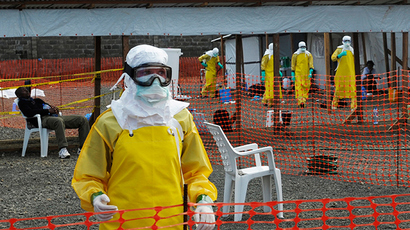15 more countries at risk of Ebola contamination – Oxford University

The deadly Ebola virus could spread to 15 new countries, according to calculations made by Oxford University. This is because there are species of fruit bat that are suspected of carrying the disease without displaying symptoms.
The new study is published in the eLife journal, and examines how
the disease could spread through the animal kingdom and to human
beings.
Fruit bats can carry the disease without showing any signs of it,
and are able to migrate and transfer it to other animals, for
example monkeys and rodents.
“A total of 51 surveyed locations reporting infections in
animals were identified in the literature since the discovery of
the disease. These comprised 17 infections in gorillas (Gorilla
gorilla), nine infections in chimpanzees (Pan troglodytes), 18 in
OWFB (old world fruit bat) and two in duikers,” the study
says.
Monkeys can be used as a form of bushmeat – meat from wild
mammals. While consumption may not necessarily cause Ebola,
preparation of raw infected meat increases the chance of
infection.
Countries stated as being at risk from Zaire – one Ebola’s five
known strains and the most contagious – are listed in the study.
“These are Nigeria, Cameroon, Central African Republic (CAR),
Ghana, Liberia, Sierra Leone, Angola, Tanzania, Togo, Ethiopia,
Mozambique, Burundi, Equatorial Guinea, Madagascar and
Malawi,” the study says.
These countries are in addition to the seven existing countries
which have reported outbreaks of the disease.
“We assembled location data on all recorded zoonotic
transmission to humans and Ebola virus infection in bats and
primates (1976-2014),” the study’s authors say in an
abstract, explaining that the study was compiled using species
distribution methods. “These occurrence data were paired with
environmental covariates to predict a zoonotic transmission niche
covering 22 countries across Central and West Africa,” they
say.
“Our map shows the likely ‘reservoir’ of Ebola virus in
animal populations, and this is larger than has been previously
appreciated,” study author Nick Golding, a researcher at
Oxford University’s Department of Zoology, told the Wall Street
Journal. “This does not mean that transmission to humans is
inevitable in these areas; only that all the environmental and
epidemiological conditions suitable for an outbreak occur
there.”
Other Ebola strains – Sudan, Taï Forest and Bundibugyo – have
been reported in the Ivory Coast, Sudan and Uganda previously.
According to the World Health Organization, one strain – Reston –
has not instigated any outbreaks.
On Tuesday, it was reported that the human death toll from the
disease had jumped by 200 in a single day, up to 2,296. The WHO
said that, as of when the statistics were presented, it was
likely that there had been further fatalities as a result of
Ebola.














